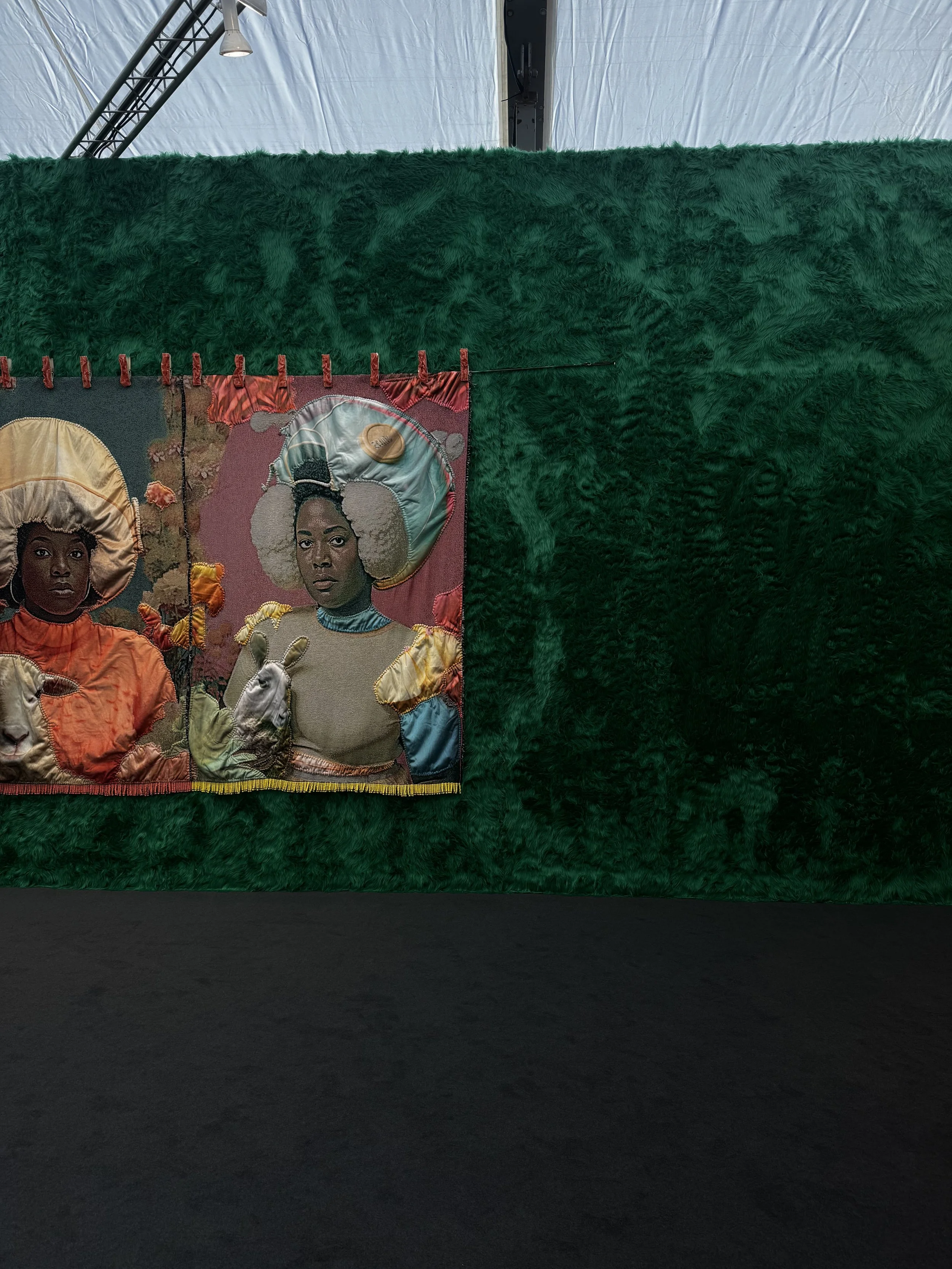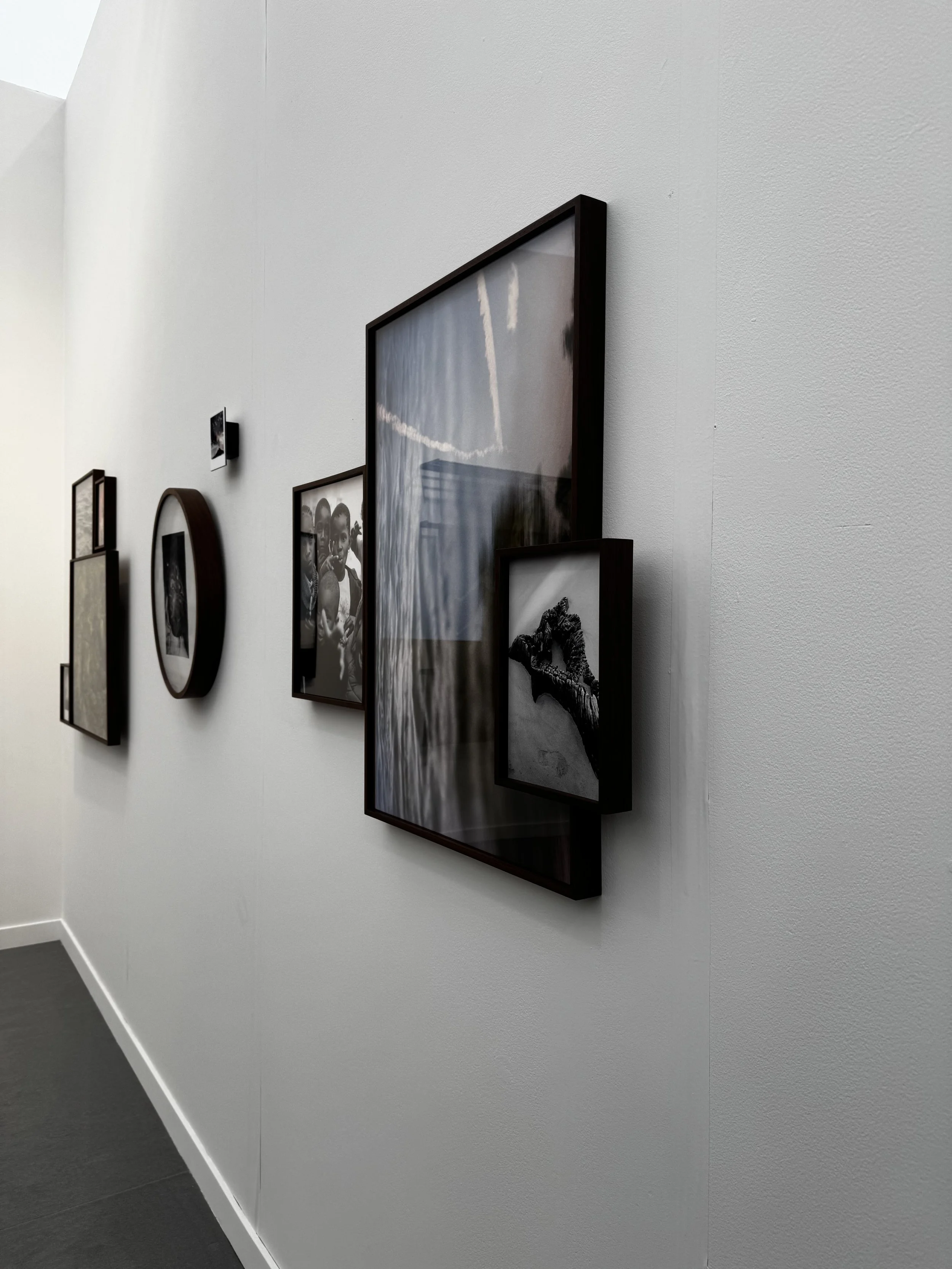Frieze Los Angeles 2025: Diasporic Currents on the Pacific Rim
From 20 to 23 February 2025, Frieze Los Angeles once again transformed Santa Monica Airport into a sprawling cultural runway where the global art market meets the charged atmospheres of the West Coast. Often described as one of the most influential art fairs worldwide, Frieze LA carries undeniable gravitational force. Yet for those seeking emerging lens based practices, this year’s edition revealed a more fragmented picture. Afropean voices surfaced only sporadically. The dominant presence remained African American and wider diasporic narratives rooted in the Americas.
One of the most compelling photographic positions came from Shaniqwa Jarvis, presented by Sow & Tailor. Jarvis, born in New Jersey and based in Los Angeles, has built a distinctive practice that moves effortlessly between intimate portraiture and cultural documentation. Her camera often lingers on artists, musicians and communities shaped by hip hop, fashion and underground cultures. At Frieze LA her works resonated with a quiet authority. The images carried the weight of self representation rather than spectacle. Jarvis photographs Black bodies not as symbols but as autonomous presences, grounded in their own aesthetics and social worlds. Her contribution stood out as one of the fair’s most emotionally precise lens based statements.
A different speculative and future facing energy unfolded at Vielmetter Los Angeles, where the work of April Bey commanded attention. Bey, born in the Bahamas and now based in Los Angeles, is known for constructing immersive Afrofuturist worlds that blend photography, tapestry and digital fantasy. Her practice stages alternative universes where Black identities exist beyond colonial and patriarchal frameworks. At Frieze, these works operated as portals rather than images. They invited the viewer into speculative genealogies that reimagine power, gender and belonging. While not emerging in the traditional sense, Bey’s presence underscored how diasporic practices continue to push photographic representation into expanded narrative fields.
Despite these strong positions, the overall presence of Afropean artists remained limited across the fair. The emphasis leaned heavily toward African American perspectives and broader Black diasporic voices shaped by the histories of the Americas. This imbalance was noticeable, particularly in a year when many European institutions increasingly foreground Afropean discourse. At Frieze LA the transatlantic dialogue still feels one directional.
Yet the fair remains an essential site for observing how Black image making evolves across continents. What Frieze Los Angeles 2025 made clear is that the appetite for diasporic perspectives is firmly established within the market and institutional circuits. What remains to grow is the visibility of Afropean lens based practices that navigate between Europe and Africa with their specific historical entanglements.
Frieze LA continues to shape the rhythms of the global art calendar with confidence and scale. Its stages are vast and its reach undeniable. One leaves the airport hangars with a sense of both inspiration and expectation. The diasporic voices were powerful this year. The Afropean history, however, still will have to wait a little longer until written more fully in future editions.




